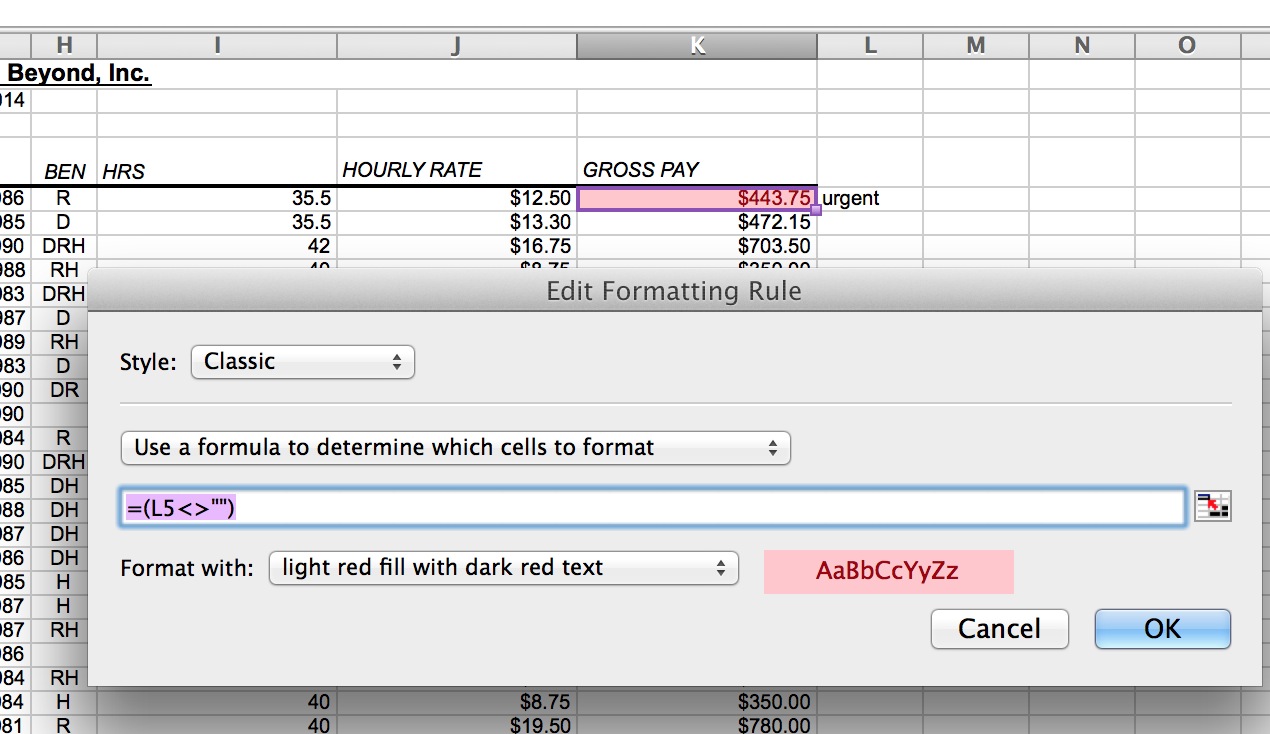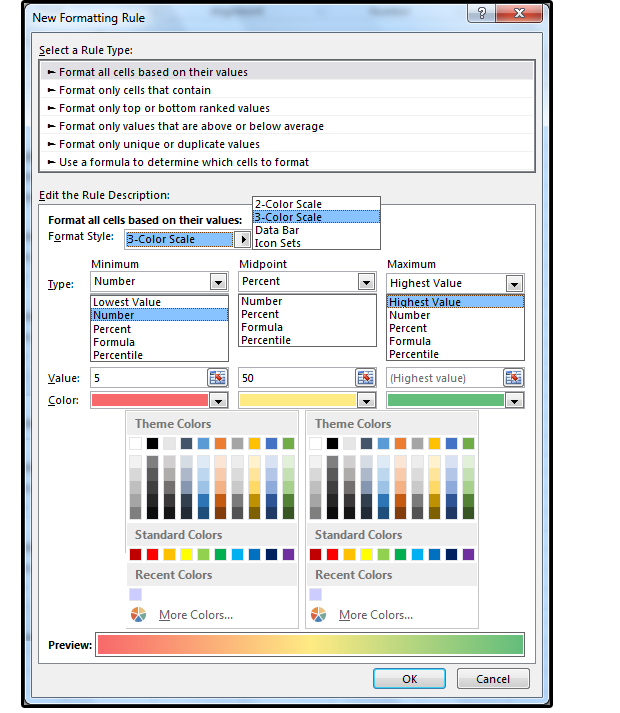

As a good alternative, use " Center across selection,” found under Home → Alignment Group.
#HOW CAN I DO A CUSTOM RULE FOR CONDITIONAL FORMATTING ON A MAC? FULL#
The Microsoft knowledge base is full of frequently encountered problems with merged cells. Generally, you do not want formula cells to be formatted as text! Worse still, any cell housing a formula that references a text-formatted cell also will be formatted as text. All data entered into cells formatted as text become text, even if you meant for them to be numbers or dates. Perhaps headings are an exception to this rule.įormat cells as text only when completely necessary. If you have altered the default alignment, you will be left scratching your head. It is very common for people to reference cells, which look like numbers but in reality are text. If you start changing this formatting, you will not be able to tell at a glance if the contents of a cell are text or numeric.

By default, numbers in Excel are right-aligned and text is left-aligned, and there are good reasons to leave it this way. People also tinker with the alignment of cell data. These can then be used for criteria for features such as Advanced Filter and Database functions. It is always a good idea to leave at least three blank rows above your table ( at least three, preferably more). Some very good universal colors to consider using in your spreadsheets are black, white, and gray. Often the overuse of formatting adds size to your workbook, and although your workbook might look like a work of art to you, it might look terrible to someone else. Although they don’t necessarily realize it, this time frequently comes at the expense of efficiency.

We are big believers in " keeping it simple.” Far too many people spend tremendous amounts of time formatting their spread-sheets. Although a spreadsheet should be easy to read and follow, this should rarely be at the expense of efficiency. Moving beyond structure, formatting also can cause problems. Sorting also will speed the calculation process of many functions significantly. Excel has a rich set of lookup and reference formulas, some of which require that your data be sorted in a logical order. Make sure your data is sorted whenever possible. If you find you are repeating the same data over and over for two or more rows in one of these columns, resist the temptation to use blank cells to indicate repetition. With this in mind, you should set up tables with column headings going across the first row of your table and related data laid out in a continuous manner directly underneath their appropriate headings. It is no coincidence that Excel spreadsheets can comprise 1,048,576 rows (65,536 pre-2007) but only 16,384 columns (256 pre-2007). In such scenarios, you can use these features to their full potential only when you’ve laid out your data in a very basic table. Time and time again we see spreadsheets that do not follow this simple rule and thus are limited in their ability to take full advantage of some of Excel’s most powerful features, including PivotTables, subtotals, and worksheet formulas. The first three items on the preceding list add up to one thing: you should always try to keep related data in one continuous table. Having blank columns and rows in tables of data Unnecessarily spreading data over different tables Unnecessarily spreading data over numerous worksheets Unnecessarily spreading data over many different workbooks


 0 kommentar(er)
0 kommentar(er)
